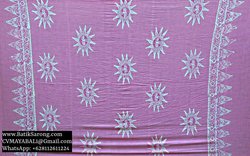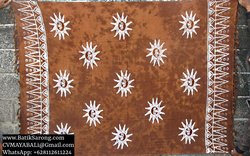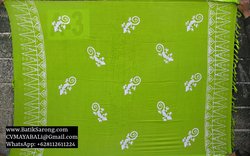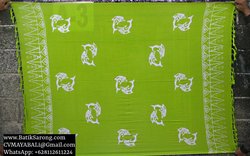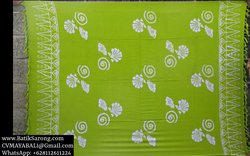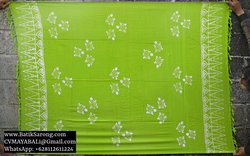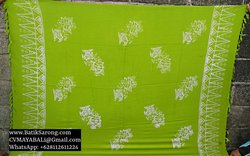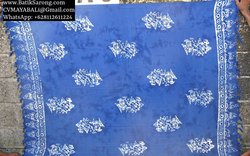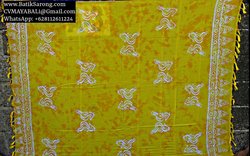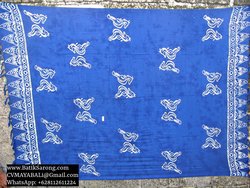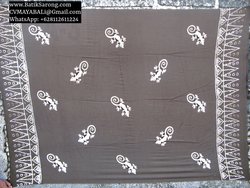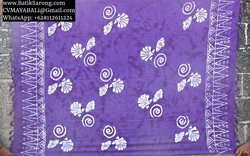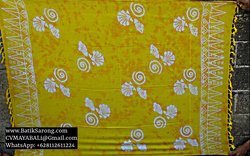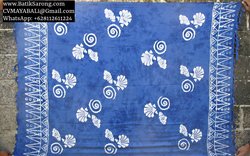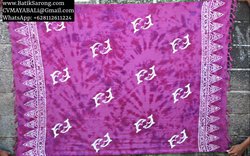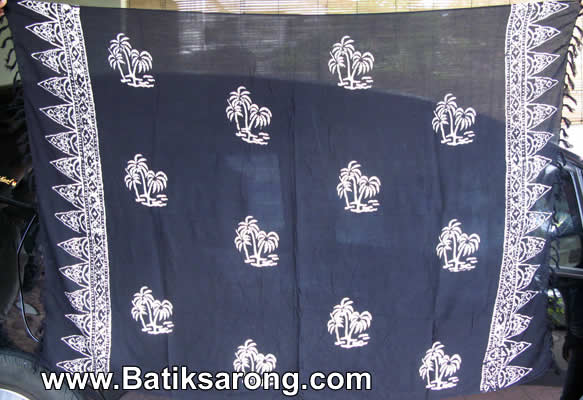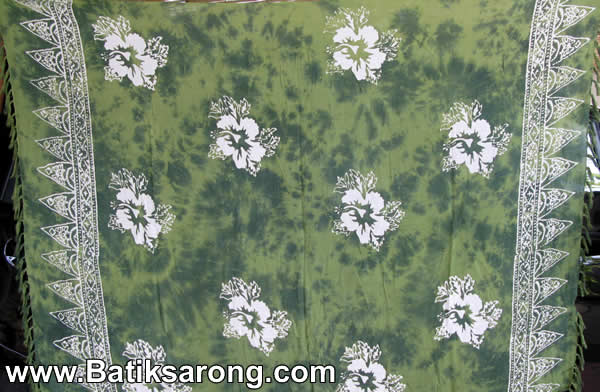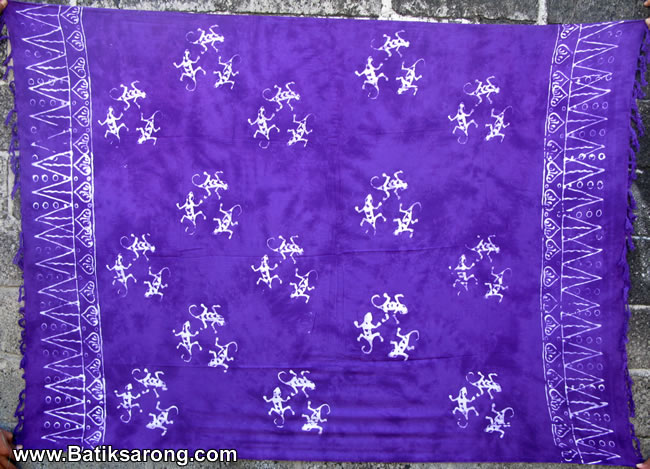Across the Pacific Ocean, in Polynesian countries like Samoa, Tonga, and Hawaii, the lavalava is a garment closely related to the sarong. Lavalava, also known as ie lavalava, is a traditional wraparound skirt worn by both men and women in Samoa and other Polynesian cultures. The lavalava holds deep cultural significance, symbolizing heritage, identity, and community. It is often worn during important ceremonies, family gatherings, and daily life, making it a staple in Polynesian wardrobes. The design of a lavalava often features bold tropical patterns, floral prints, or Polynesian tribal motifs. Like Balinese sarongs, lavalavas are made from breathable fabrics such as cotton or rayon, ensuring comfort in warm climates. The versatility of the lavalava allows it to be styled in various ways, whether worn as a skirt, a dress, or even a head covering. In Polynesian countries, the lavalava is not just clothing; it is an emblem of cultural pride and artistic expression.
Batik is one of Indonesia's most cherished art forms and plays a significant role in the creation of handpainted sarongs. This technique involves applying wax to fabric to create patterns, then dyeing the fabric so that the areas covered by wax resist the dye. Once the dyeing process is complete, the wax is removed, revealing the intricate designs. This method allows for a wide range of colors and patterns, making each batik sarong a unique piece of art. In Bali and Java, batik artisans are highly skilled in this craft, often working from small workshops or home studios. The designs they create are inspired by nature, featuring tropical flowers, leaves, and oceanic motifs. The vibrant colors and detailed patterns on batik sarongs reflect the beauty of the tropical environment and the rich cultural history of Indonesia. In recent years, batik sarongs have gained international recognition, admired for their artistic value and cultural significance. The batik artisans of Java and Bali are the unsung heroes behind the beautiful hand painted sarongs. Many of these artisans come from families that have been practicing batik for generations, passing down their knowledge and techniques from one generation to the next. In Java, batik is a deeply respected art form, with batik workshops dotting the streets. Here, artisans work tirelessly to create intricate designs, often spending hours or even days on a single piece. In Bali, the batik tradition is equally strong, but with its own distinct style. Balinese batik often incorporates vibrant tropical colors and bold floral patterns, reflecting the island's natural beauty. Many batik artisans in Bali also experiment with modern designs, blending traditional techniques with contemporary motifs to create sarongs that appeal to both locals and tourists. The life of a batik artisan is one of dedication and creativity. Each piece they produce is a labor of love, with every line, color, and pattern carefully thought out. Their work not only supports their families but also helps preserve Indonesia's rich cultural heritage.
Sarongs and lavalavas are incredibly versatile garments, worn for various purposes across different cultures. In Bali and Polynesian countries, these garments are not just for beachwear but are also used in everyday life and special occasions. Their lightweight, breathable fabric makes them ideal for hot, tropical climates, and their ability to be styled in multiple ways adds to their appeal. As a beach cover-up, sarongs can be tied around the waist as a wrap skirt or draped over the shoulders as a shawl. They can also be used as a summer dress, transforming a simple piece of fabric into elegant beachwear. Many sarongs feature bold tropical patterns, such as hibiscus and frangipani flowers, peacock prints, or butterfly designs, giving them a distinctive island vacation look. Beyond clothing, sarongs can also serve as tablecloths, shawls, or even beach blankets. Their lightweight and quick-drying properties make them perfect for travel, as they can easily be packed into a bag and used in a variety of settings. Whether you’re lounging by the pool or attending a summer festival, sarongs and lavalavas offer endless possibilities for styling and functionality.
The influence of Polynesian culture on sarong design is unmistakable. The bold, geometric patterns found in traditional Polynesian tattoos, or tatau, often make their way into the designs of sarongs and lavalavas. These patterns carry deep cultural meanings, representing everything from family ties to spiritual beliefs. In addition to tribal designs, Polynesian sarongs often feature vibrant floral prints, with hibiscus and plumeria flowers being common motifs. In places like Samoa and Tonga, the lavalava is an essential part of daily attire. It’s not uncommon to see people wearing them while going about their daily activities, from working in the fields to attending formal events. The versatility of the lavalava allows it to be adapted for any occasion, with more elaborate designs reserved for special ceremonies or gatherings. While traditional batik sarongs often feature intricate floral and geometric patterns, modern batik sarongs have evolved to incorporate a wide range of styles and designs. Many contemporary batik sarongs blend traditional techniques with modern aesthetics, resulting in garments that appeal to a global audience. From tropical motifs like palm leaves and ocean waves to abstract patterns and mandalas, modern batik sarongs offer something for everyone.
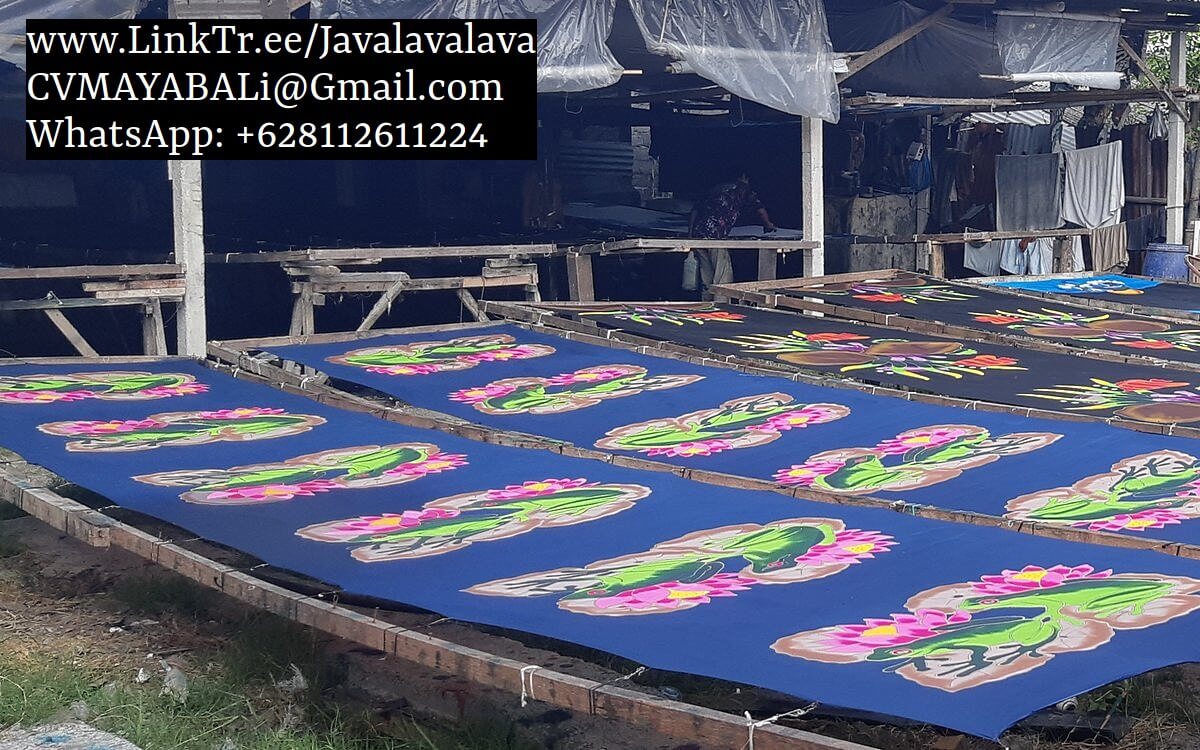
One of the unique aspects of sarong production in Bali is the ability to create custom designs. Many manufacturers and artisans offer custom-made sarongs, allowing customers to choose their preferred colors, patterns, and fabrics. Whether it’s a personalized beach cover-up for a special vacation or a custom-printed sarong for a wedding, the options are endless. Custom sarongs are especially popular for events such as beach weddings, where brides and bridesmaids often wear matching sarongs in vibrant tropical colors. Some manufacturers also offer the option to add a logo or design, making custom sarongs a popular choice for corporate gifts or promotional items. The process of creating a custom sarong involves working closely with the artisan or manufacturer to select the fabric and design. Hand-painting and batik techniques are often used to create one-of-a-kind pieces that reflect the customer’s individual style.
- Rayon fabric only. Handpainted batik.
- Wholesale only. Minimum order 300 pcs apply
- Sea freight port to port to any major shipping port worldwide
- Payment by Bank Transfer only
- We are registered export company in Bali and Java Indonesia. Export worldwide since 2001
- Contact us by filling inquiry form, chat on WhatsApp or send email to our Gmail address. See photo for our contact details.
Handpainted sarongs from Bali, Indonesia. Island’s rich artistic traditions and the skill of its artisans. From the bustling sarong factories of Bali to the family-run batik workshops in Java, these garments are crafted with care, creativity, and a deep respect for cultural heritage. Sarong as a beach cover-up, a summer dress, or a lavalava for a special occasion, these versatile pieces offer endless possibilities for style and function. With their vibrant tropical patterns, breathable fabrics, and handcrafted details, sarongs and lavalavas are perfect island life. As the popularity of sarongs continues to grow, so too does the appreciation for the artisans who create them. Batik, hand-painting, or silkscreen printing, each sarong tells a story of culture, craftsmanship, and creativity, making them timeless pieces that will be cherished for years to come.
Sarong Factory